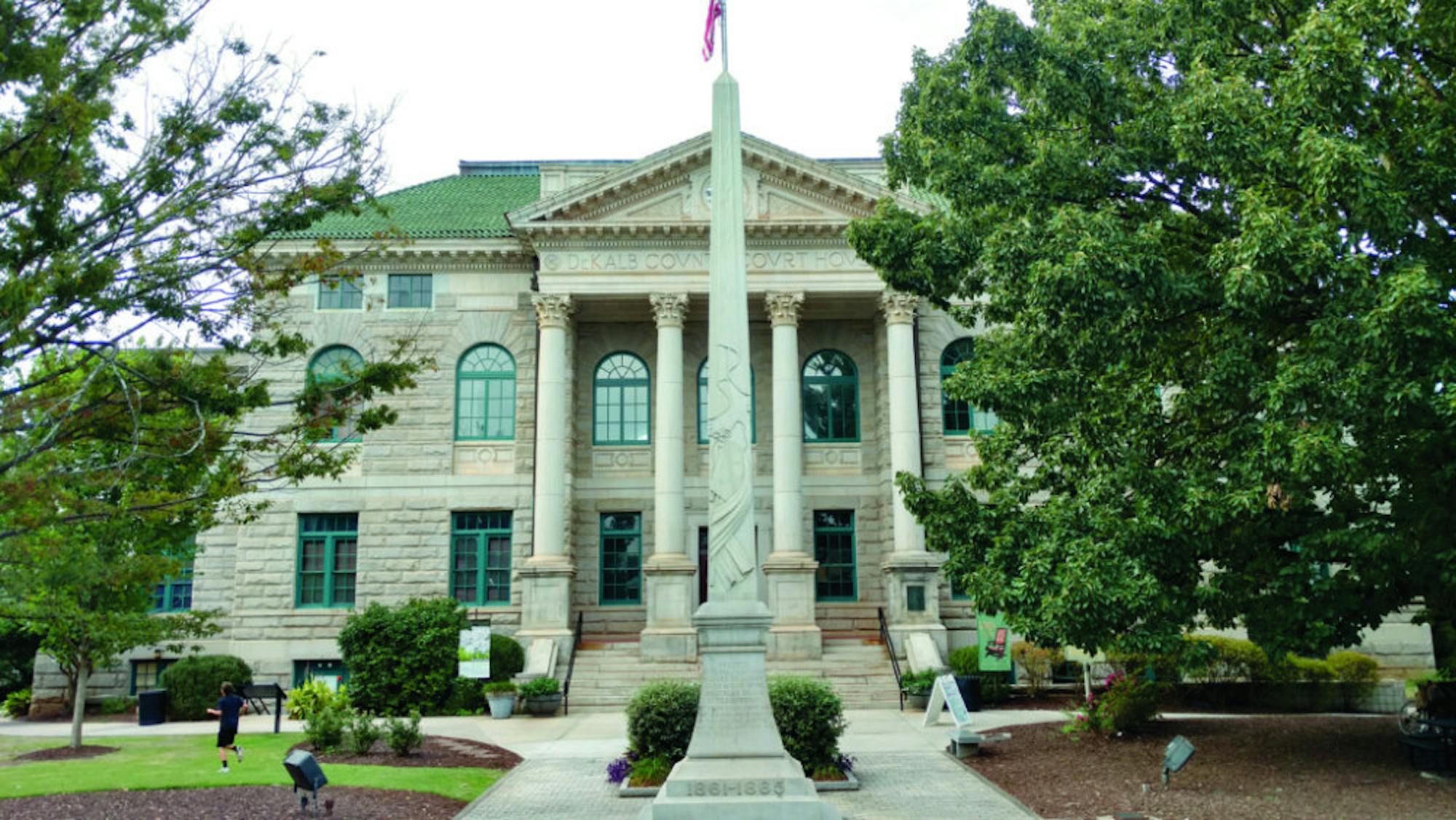
The "Lost Cause" monument in front of Dekalb County Courthouse in Decatur, Ga., has been the subject of petitions and protests asking for its removal by Decatur residents including Jimmy Carter Professor of American History Joseph Crespino./Richard Chess, Asst. News Editor
Two summers ago, a South Carolina native set out to ignite a race war. Two weeks ago, his hopes were fulfilled when several hundred white supremacists emerged from the guise of the internet, chanting “blood and soil.”
Before walking into a Charleston, S.C., church with a .45-caliber Glock handgun, Dylann Roof was known for posing with Confederate flags on the internet. His actions spurred an extremist movement that had been largely absent from the mainstream news cycle until the recent clashes in Charlottesville, Va., where the ideas and violence espoused by the so-called “alt-right” alarmed the nation and triggered discourse about Confederate-era symbols and their place in modern society.
Georgia is home to the second-largest number of Confederate symbols — including monuments, streets, counties and parks — in the United States with 194, according to the Atlanta Journal-Constitution.
The August “Unite the Right” rally in Charlottesville prompted petitions nationwide to relocate Confederate monuments from public spaces, including the “Lost Cause” monument located in front of the DeKalb County Courthouse in Decatur, Ga. Georgia state law, however, does not allow publically owned military monuments to be removed, relocated or altered. To remove the monument, the law must be amended.
Jimmy Carter Professor of American History Joseph Crespino said Confederate symbols bear different meanings for different people, and, as important artifacts in our history, they should not be erased.
“I am always, as a historian, in favor of contextualizing, rather than [getting] rid of them entirely,” Crespino said. “I believe strongly that we can move them to other places. Confederate memorials can be moved from the central square of DeKalb County … to a museum or moved to a cemetery where there are other Confederate graves.”
Crespino publicly advocated for the relocation of the “Lost Cause” monument in a letter to the editor on decaturish.com, calling for the memorial to be moved into a museum.
“The Confederate monument on the Decatur Square, erected in 1908, only two years after a deadly race riot in nearby Atlanta that killed dozens of African Americans, was clearly part of this broader movement,” Crespino wrote. “We know that not only from the historical context, but also from the language of the Decatur monument itself, with its phrases about a ‘covenant keeping race’ that ‘held fast to the faith as it was given by the fathers of the republic.’ This kind of language invokes notions of racial hierarchy that are anathema to our community today.”
According to Crespino, those supporting the removal of these monuments face a major problem with Atlanta’s biggest Confederate emblem, Stone Mountain, which depicts carvings of Confederate leaders Jefferson Davis, Robert E. Lee and Stonewall Jackson and was the founding site for the second Ku Klux Klan.
“I would never be in favor of the destruction of one of these historical artifacts,” Crespino said, adding, “They’re not teaching us about the history of the Civil War. They’re teaching us about the memory of the Civil War and the way that the war was memorialized in this very political way that was used to … justify and rationalize … white supremacy.”
Amid protests and petitions to remove monuments and rename streets in Georgia, the city of Atlanta unveiled a statue of Martin Luther King Jr. on the state’s Capitol grounds Aug. 28, beside statues of Confederate leaders Gen. John Gordon, Sen. Richard Russell and Gov. Eugene Talmadge.





